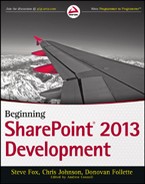DEFINING THE CLOUD
To understand Windows Azure, you must first know a bit about the cloud. Cloud computing (a broader descriptor for the cloud) is all about leveraging the Web as a set of resources for the development and deployment of your solutions. Traditionally, cloud computing has been defined as categories of services — for example, Infrastructure as a Service (IAAS), Platform as a Service (PAAS), and Software as a Service (SAAS). Each one of these categories is fairly different in the context of development. For instance, you might think of IAAS as hosted virtual machines (VMs) you manage remotely; PAAS as where you deploy code, data, binary large objects (BLOBs), web apps, and other application artifacts to a cloud-based environment (such as Windows Server 2008 R2 and IIS); and SAAS as subscription-based services that you can sign up to use (for example, Office 365).
Although these three categories of services dominate the way in which the cloud is characterized, the cloud has four generally accepted pillars:
- Pool resources with other cloud users.
- Manage your own services and apps through the management portal.
- Apps and services can grow and contract with your business needs.
- Pay for only what you use in regards to the cloud.
Figure 5-1 illustrates these four core pillars of the cloud. You can apply each principle in some way to the categories of services.
Both the categories of services and the core pillars of cloud computing apply to Windows Azure. For example, you can create and deploy a set of virtual machines to Windows Azure, build out a SharePoint farm on those virtual machines, and then manage it remotely. Within this virtualized farm, you’re potentially pooling resources; you’re managing the services through your portal or tools; you can grow or shrink the SharePoint farm (number of servers in the farm), therefore, it is elastic; and it is usage-based because you’re only getting billed for what you use.
In addition to understanding the relationship across the cloud services (IAAS, PAAS, and SAAS) categories and the pillars that define cloud computing, getting beneath the surface area of the cloud and digging into Windows Azure is also important. This is not only because integrating the two technologies provides the developer with interesting and compelling solution opportunities, but it’s also because now Windows Azure is a more native part of the SharePoint 2013 platform. Thus, it’s critical that you understand how you can use Windows Azure in your SharePoint development.

